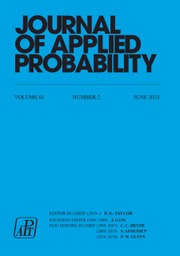Crossref Citations
This article has been cited by the following publications. This list is generated based on data provided by Crossref.
Daley, D. J.
Hall, Peter
and
Heyde, C. C.
1982.
Further results on the survival of a gene represented in a founder population.
Journal of Mathematical Biology,
Vol. 14,
Issue. 3,
p.
355.
Heyde, C. C.
1983.
An alternative approach to asymptotic results on genetic composition when the population size is varying.
Journal of Mathematical Biology,
Vol. 18,
Issue. 2,
p.
163.
Heyde, C. C.
2010.
Selected Works of C.C. Heyde.
p.
370.

